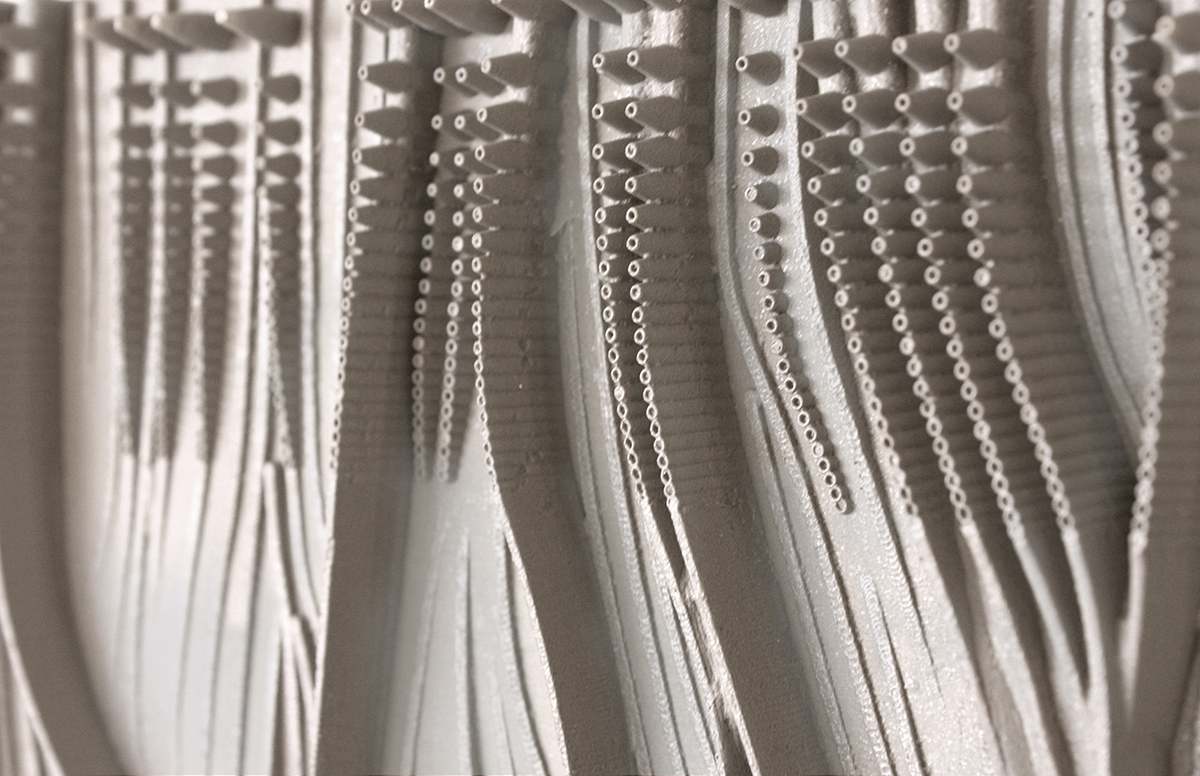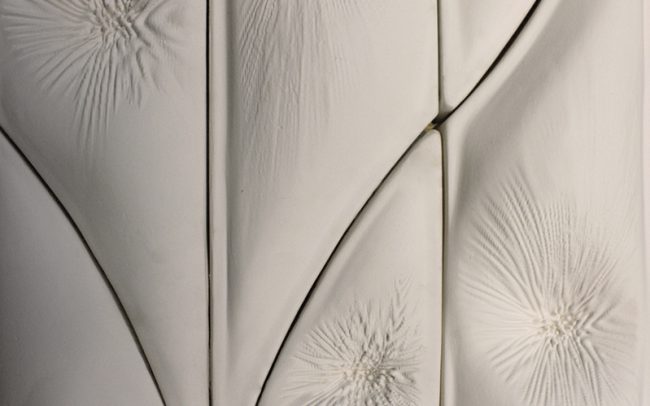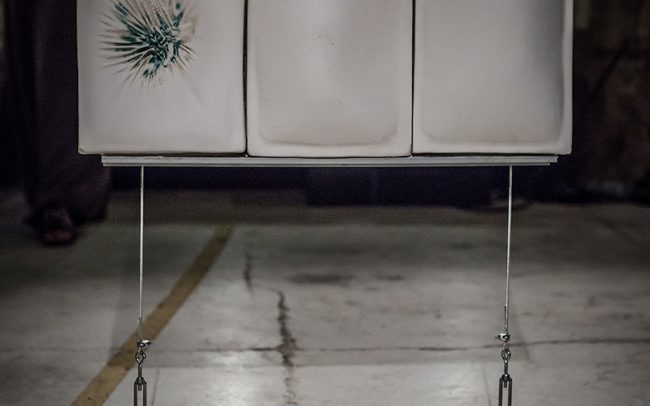clay casts able to sense the environment through their microbiome
All living organisms are sensorial bodies, able to respond and adapt to different environmental conditions. Architecture should be no different. Buildings should be capable of sensing the environment and responding to it. Only by doing this, architecture could accomplish a more intimate relation with nature and its inhabitants at the same time.
All human beings have their microbiome, a unique set of microorganisms that are inhabiting our bodies. These microorganism are running many beneficial processes for humans. Different types of microorganisms are determining the health of each human. Buildings are not different, they have their microbiome. Microorganisms of a building also affect human health and environment, and could run beneficial processes for the building. Thus making buildings environmentally responsive.
This project investigates the possibility of using living microorganisms (specifically bacteria species) as responsive elements coming from renewable and non-harmful resources. There are two parallel research lines in the project. One investigates geometry – surface qualities for bacterial receptivity, with focus on surface texture, roughness and porosity. The scale of these surface qualities determines receptivity level and highly influences human perception of the surface. Geometrical studies take into consideration new computational possibilities in heavy-data digital world and materialization of those complex geometries.
The research lead to a wall prototype with a double-sided condition. Two very different sides help each other, making a material system able to host, control and manipulate bacterial growth. One side of wall is directly exposed to rain, thus acts as water collecting surface that channels the water in order to moisturise bacteria on the opposite side of wall. That opposite side of wall is in constant shade, protected from rain and sun. The right temperature needed for bacterial growth is obtained through the varying distance of the double-sided condition. The wall is a material system where bacteria brings architecture closer to nature and humans. Where architecture sense and reacts to nature through chromatic change which affects human perception of space.
The wall is materialized in clay, a naturally occurring material that can provide control over where the bacteria can grow. Casting as a fabrication method provides high surface manipulation and texture quality. Another aspect of the research is to establish where a traditional material and fabrication method meet contemporary high detail resolution design and material bio-integration.
If microbiome were to be considered as another design parameter, bacteria could leave the microbiology labs and enter the world of architecture, a world where architects design specific conditions for bacteria species to grow and shape architecture themselves. Thus using bacteria as sustainable replacements for toxic, non-biological and non-recyclable versions of products that are polluting to produce.















